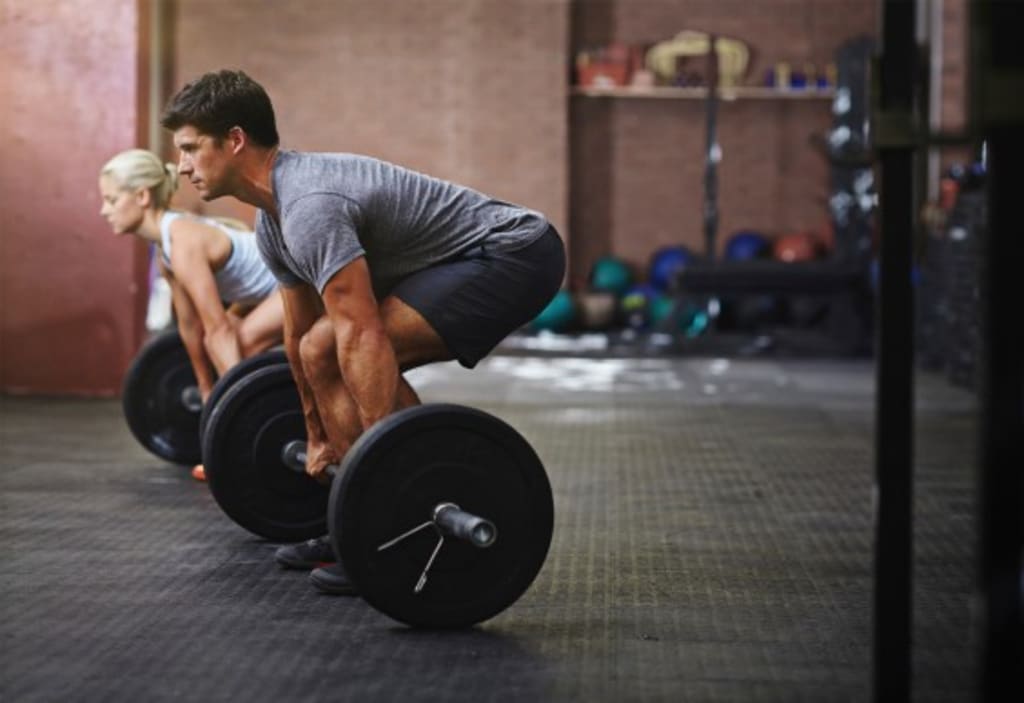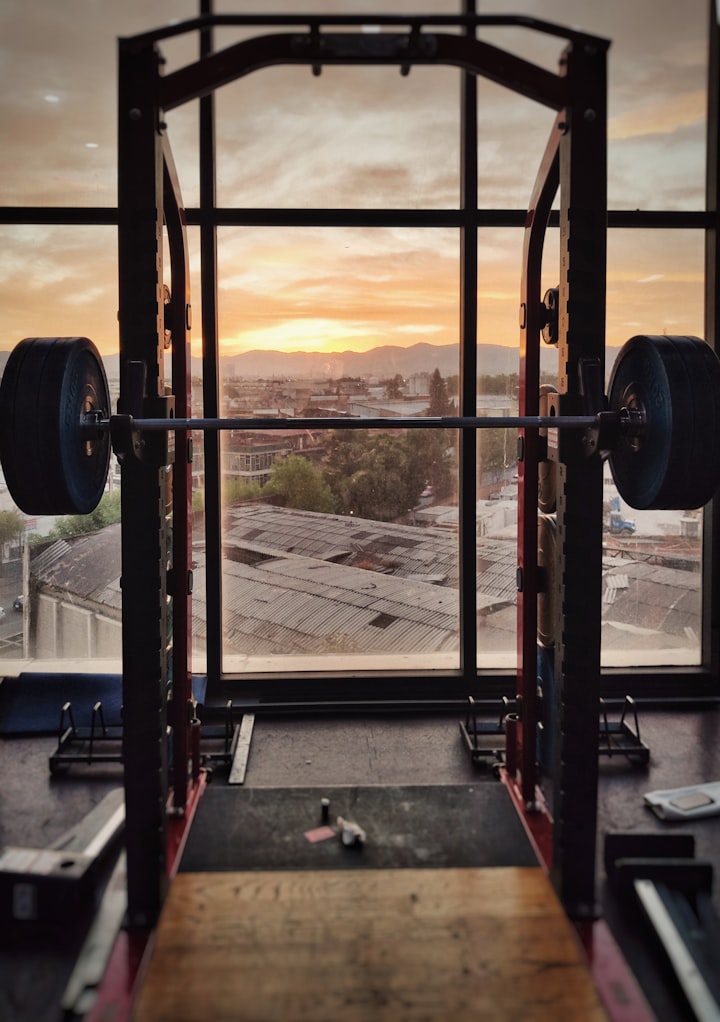Weight-lifting vs Calisthentics
What are they and how do they compare?

In recent times the fitness world has experienced a cataclysmic boom in the number of people delving into it. Being healthy has become (almost) the cool thing to do—with people taking very different approaches. From juice cleanses to fad-dieting, so many people get hung up over the intricate details of food that they end up failing in their ultimate goals.
Diet often makes or breaks someone's dream of achieving the so-called "perfect" body, and it is always consistency that separates the accomplished from the failed. This isn't to say that those who have "made it" haven't failed along the way—believe me, everyone does at some point, especially in the early days. But consistently good nutrition, combined with an effective training programme, will always end in the results you want.
And it is the latter that I want to talk about today. So many people scoff at the thought of Calisthenics over Weight-lifting, and to an extent, it is with fair reason. Calisthenics often uses a lower stimulus to trigger muscle response. But does that mean that Calisthenics have no place in a training programme? Not at all.
I'd firstly like to highlight that whatever your goal, whether it be to lose fat, tone up, or build muscle, resistance training (like weight-lifting and calisthenics) should be an integral part of your programme, alongside appropriate cardio work and clean eating. Per unit of time, it burns more calories for longer compared to your standard steady-state cardio like running. It also makes you stronger and more functional to complete everyday tasks. The list of benefits is incredible and something you should read about more if you haven't considered using resistance training in your programmes.
Let's start though by defining weight-lifting. Generally, it is seen as lifting an external weight (like dumbbells, barbells, sandbags, or even your living room sofa) for a prescribed number of repetitions over a prescribed number of sets. The number of repetitions and sets will vary depending on your goal, but let's not get bogged down in those details here.
Weight-lifting is the go-to image when picturing bodybuilders and fitness-fanatics and is likely the most popular method among the fitness community. Compound moves like the Bench Press, Deadlift, and Squats work for multiple muscle groups and are a great way to build the foundational strength and mobility required for more specific isolation exercises like the Lat-pull down or Hamstring-curl.
Often combined with dubious amounts of chicken and protein shakes, heavy weights are often used as a means of building large amounts of muscle and strength, with lighter weights being generally opted for to build the muscular endurance.
This is why weight-lifting is often chosen as the primary form of resistance—it is effective, tried and tested, and works for lots of people's goals and visions.
Weight-lifting does come with its limitations, however. It can often be super-expensive to join a gym, and when you join, it may be difficult to find the balance between how busy it already is there and the availability of weights and machines. Too many people and you'll likely find yourself waiting around and killing off any rhythm or intensity you had.
The risk of injury is also higher if the improper form is used or in an unsafe manner. Injuries can include physical impacts (if you dropped a dumbbell on your head, for example) or joint strains (particularly on knees and elbows).
But despite this, millions of people worldwide participate in the sport and make extraordinary gains and progressions towards their goals. But it isn't always for everybody.
Calisthenics, on the contrary, is bodyweight exercises performed over a number of repetitions and sets in a similar fashion. For the large part, no additional weights are added but advanced options include the use of weighted vests and weight-lifting belts.#
Some people have made unbelievable progressions using only callisthenic-based exercises and for these people, it is highly effective.
I like to see calisthenics as a primal form of training, with an incredible functional element. From a pure survival point of view, calisthenics allows you to be as strong as you need to be for your specific body weight without carrying unnecessary excess weight. Doing pull-ups, press-ups, and dips work lots of muscle groups and functionally allows you to maneuver obstacles that may be in your way.
From a functional point of view, calisthenics allows you to better support your own body weight and move with ease when performing day-to-day tasks. The muscles used during calisthenics and the ones used during weight lifting do not differ greatly. The difference occurs in the extent that they are used and how they strengthen.
Someone who only does weight lifting can often rarely support themselves during bodyweight moves but people who only do calisthenics can often transfer their strength into weightlifting moves. This transferability is an advantage attributed to calisthenics, but not weightlifting.
Calisthenics can also be limiting too. A lot of the exercises involve using an elevated bar—like for Static Hangs and Chin Ups. But this can easily be overcome by investing in a door mounted pull up bar. Whilst initial gains in strength and muscle mass and definition is relatively large, this quickly plateaus as the stimulus for growth weakens. As a result, Callisthenics often requires creativity and variation in order to continue progression.
Personally, I have predominantly using weight-lifting in the past as a means to build muscle and get in better shape but calisthenics work just as well. But that is just my preference—the raw nature of calisthenics though does really excite me in a way that weightlifting doesn't.
So, I hear you ask, in what circumstances should you use each training method?
If you're looking to build serious muscle mass, improve your strength beyond your natural capabilities, or activate the hugely beneficial "after-burn effect" (high calorific burning for several HOURS after exercise) then I recommend you giving weight-lifting a go. When performed safely, it can have the potential to rapidly change your life in a matter of weeks.
If gyms aren't your thing, you are limited on money, you want a different and varied form of exercise, you are a beginner to fitness, or want to improve your mobility and functional strength, then calisthenics is the way forward. It is often free, offers great advances in technicality and difficulty, and looks really impressive (search Human Flag into the search engine)
But whatever you choose is best for you, make sure you enjoy doing it! The enjoyment aspect is what helps you get out of bed on early mornings to work out, and will inspire you to carry on even when its tough. And if you seriously can't decide which one is best for you and your goals, why not try both and see what you like? Or better yet, use both in your programme as a joint method
But ultimately, the method of resistance training does not matter all too much—just get out there and do something! It will all pay off in the end.






Comments
There are no comments for this story
Be the first to respond and start the conversation.